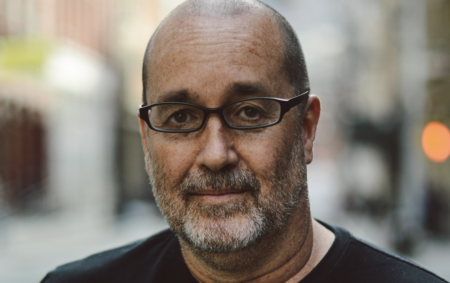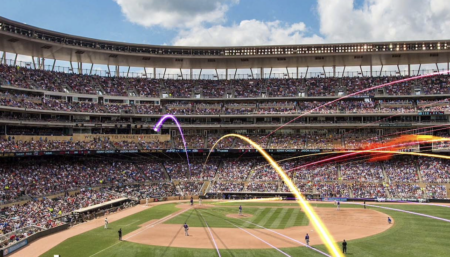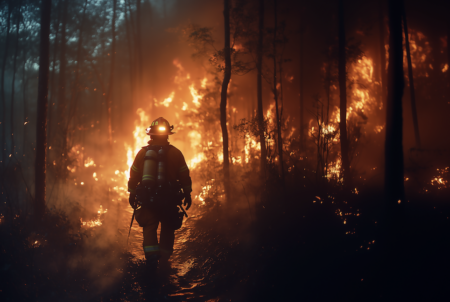In the next issue of Stadia, a number of leading sports architects talk about their most interesting recent and ongoing projects. As is often the way, we spoke about far more than we had space for in the magazine, so in the coming weeks we’ll be sharing extracts from those interviews here on the website.
Here, Gensler’s Ron Turner (sports practice area leader, convention centers practice area leader, principal) and Jonathan Emmett (design director, sports practice area leader, principal) go into more detail on LAFC’s new venue, the 22,000-seat Banc of California Stadium.
Was the situation of the new stadium important?
Emmett: The decision to place the stadium in downtown LA was a very conscious one. It really tied in to the overall philosophy and vision for the franchise and the team – to be a team for Los Angeles, and part of the fabric of the city and the community. Being in a very central location, close to downtown, was critical to that, and I think that was one of the big inspirations that the ownership and design team took to heart from day one. How do we make this a venue that felt like it was part of Los Angeles and part of the community?
Turner: LA Galaxy is probably the most successful team in the MLS, but they have more of a suburban location, so that’s what really drove the idea to have an urban team in downtown
It was about more than just building a structure to house soccer matches?
Emmett: I think it was a situation where they’re building a new team, a new franchise and a new fan base, they really wanted the stadium to be the physical embodiment of the attitude they were taking toward the new club. So rather than being a generic stadium that could house any team, they wanted it to be very much an expression of the brand that they’re creating. In some respects, that was one of the big challenges for us as the design team – we were designing a stadium as they were creating their brand and their identity. But at the same time, it was one of the really unique opportunities for an architect – to allow the image of the stadium to develop at the same time as the club and to work very closely with the team to help craft and shape that. Ultimately, the stadium has helped to define the image of the team as much as it is the other way around. We’ve been working very closely with the supporters’ groups that have already formed for the team. Since day one, they and the community have been actively engaged in the design process, which I think has had a real impact in terms of making this a unique stadium that’s tailored toward this particular franchise.
When designing the seating, you focused on atmosphere creation?
Emmett: Typically, MLS stadia haven’t taken on much personality and identity. The MLS is in its infancy – the first stadium was built less than 20 years ago and really the focus at that point was to get teams into smaller venues that were more economical, and that could differentiate from the experience of being in an NFL stadium. Those were some of the main drivers. What we’re seeing now is the trend of making those venues – even though they’re of a similar size, in the low 20,000s – more experiential, bringing some of the qualities and the intimacy of many of the English and European venues have had for decades or even centuries.
Which European stadia did you turn to for inspiration?
Emmett: A personal favorite of mine is Loftus Road where QPR play. Although it’s a very old stadium and certainly has its flaws, as an intimate venue it’s pretty incredible how close the seats are to the pitch and how close the fans can get. The terrace decks cantilevering over the lower seating bowl really give it a very intimate feel. Obviously, we also looked at a couple of the more well-known venues, such as the Kop at Anfield, and the Yellow Wall at Westfalenstadion, for inspiration.
The stadium won’t only be open for game days. What will it add to the local area?
Turner: There are some really unique things that are happening at this stadium that traditionally don’t happen in a lot of venues. The weather helps that. We have an ancillary building, adjacent to the stadium, that is connected to the VIP lobby. The stadium site is located in Exposition Park where a lot of LA’s major museums are situated. There are about 3-4 million people that come to the museums each year, and there really isn’t a nice place for them to have food. There’s a lot of people on-site and we want to take advantage of that with the new building.
We also have USC next door in the LA Coliseum, so the building will be completely activated during all of those games as well. It will also be activated during friendlies that LAFC has the right to hold in the Coliseum. The stadium will be an interactive campus, essentially, and that was another big driver for really making it part of Los Angeles.
It must have been interesting having the supporters involved in the design process.
Emmett: We’ve had a series of workshops here in our office with LAFC and the supporters groups – there are about five or six distinct groups. It’s been incredible to see the kind of support and passion they have, considering they don’t have a single player yet, or a coach. The supporters have a phenomenal knowledge of and passion for the game, both in the MLS and internationally. They’ve really relished the opportunity provided by the team to come to the table and be involved in the process. The club really understands that they are nothing without the fans. Understanding what they want, not just in terms of the physical aspects of the stadium, but in terms of the game-day experience, has been a really great aspect of the process.
Turner: The ownership group is amazing. We have people like Peter Guber, who has spent his entire life in the entertainment industry – he owns the Dodgers, he owns the Golden State Warriors – he’s heavily into entertainment and sports. They brought on some of the best people in the industry to design their merchandise, starting with the logo.
The stadium is a real blend of the European and Stateside game-day experience.
Emmett: It’s a unique approach for a building this size. Although it’s 22,000 seats, there’s probably more diversity in a building of this size than there is in many NFL buildings that could be three times the size. That’s driven by the Los Angeles market. There’s a level of authenticity that’s demanded these days. Fans are very discerning, and they’re looking for a great game-day experience, but they want great, authentic food and a lot of choice. Gone are the days where you just grab a beer and a hotdog. Having that choice and being able to customize your personal experience is becoming more and more important around all the leagues, but we’re seeing it on a whole different level here.




